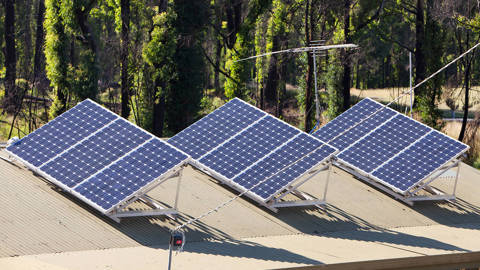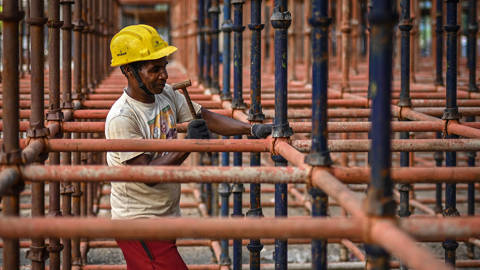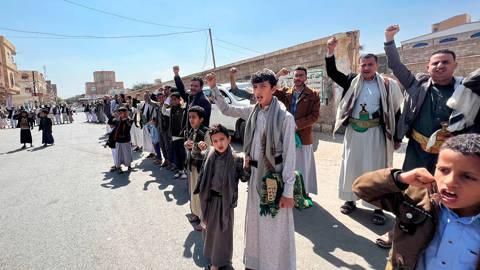To achieve global climate goals, we can no longer ignore the people most exposed to the dire consequences of rising temperatures. As developed countries set new climate-finance targets at COP29, they should also devise more inclusive financial services and products to ensure that resources reach vulnerable communities.
WASHINGTON, DC – At the top of the list of measures to be agreed at the United Nations Climate Change Conference (COP29) in Baku, Azerbaijan, is the New Collective Quantified Goal (NCQG) on climate finance, which will support climate action in developing countries after 2025. The main concern will be setting contribution targets for developed countries. But another crucial question has been overlooked: who will have access to these funds?
Not nearly enough climate finance has reached low-income communities in the world’s most vulnerable countries. These are the places that are disproportionately affected by global warming, despite contributing the least to causing the problem. An estimated 75% of the $4.8 trillion that has been channeled into climate action over the past decade has been invested in high-income countries. Between 2003 and 2016, less than 10% of international, regional, and national climate funds flowed to local actors.
This must change. Many of the 3.3 billion people who live in regions that are highly vulnerable to climate change do not have the resources they need to protect themselves, their families, or their livelihoods. And providing climate finance to low-income households and businesses has well-known benefits: they can recover more quickly from weather shocks; diversify their income-generating activities; and invest in the green technologies needed to build resilience and advance the energy transition. While agreeing a new climate-finance target is a critical first step toward securing funding, addressing how to channel more of it to local communities must be a central part of the conversation at COP29, and on the road to COP30 in Belém, Brazil, too.
One possible solution is to develop more inclusive financial services. Over recent decades, an ecosystem of investors, regulators, and financial institutions has evolved to take large-scale funding and deliver it in small-ticket financing to low-income households while managing risk. Equally important, these institutions have billions of long-term customers in climate-vulnerable countries and communities. They have built relationships with these people and understand their needs and how best to serve them. From that foundation, it is possible to create products that will effectively boost climate adaptation and resilience.
Many innovative programs have already been implemented. Low-cost heat-wave insurance protects hundreds of thousands of poor women in India against soaring temperatures. Contingent credit lines help farmers in Bangladesh manage flood risks. And thanks to a mobile layaway product, smallholder farmers in Mali, Senegal, and Tanzania can pay in installments for climate-smart inputs and sustainable-agriculture training programs.
In addition to bolstering climate adaptation and resilience, inclusive financial products and services can help drive investment in mitigation and contribute to a just green transition. In Bangladesh, for example, electric-cookstove manufacturer ATEC has deployed a cook-to-earn model, which involves paying customers shares of ATEC’s revenue from the sale of carbon credits, based on customers’ usage data. By incentivizing people to adopt and continue using this green technology, they are creating a virtuous cycle.
Wide adoption of such nascent initiatives could accelerate climate action at the grassroots level. Ensuring that low-income and otherwise disadvantaged people can access the funding provided by developed countries would promote resilience to extreme weather and transform the fight against global warming. Inclusive finance could also help alleviate the global climate-finance gap, because the sector has a proven track record in mobilizing private capital for development projects. What was an NGO-driven and grant-oriented sector 30 years ago is now a massive commercial industry.
To achieve global climate goals, we can no longer ignore the people most exposed to the dire consequences of rising temperatures. The NCQG, while important and necessary, is only the starting point. As developed countries set new climate-finance targets at COP29, they must also make a more concerted effort to ensure that this funding reaches those who need it the most. Inclusive finance is an obvious part of the solution that could achieve so much more than it is today.











WASHINGTON, DC – At the top of the list of measures to be agreed at the United Nations Climate Change Conference (COP29) in Baku, Azerbaijan, is the New Collective Quantified Goal (NCQG) on climate finance, which will support climate action in developing countries after 2025. The main concern will be setting contribution targets for developed countries. But another crucial question has been overlooked: who will have access to these funds?
Not nearly enough climate finance has reached low-income communities in the world’s most vulnerable countries. These are the places that are disproportionately affected by global warming, despite contributing the least to causing the problem. An estimated 75% of the $4.8 trillion that has been channeled into climate action over the past decade has been invested in high-income countries. Between 2003 and 2016, less than 10% of international, regional, and national climate funds flowed to local actors.
This must change. Many of the 3.3 billion people who live in regions that are highly vulnerable to climate change do not have the resources they need to protect themselves, their families, or their livelihoods. And providing climate finance to low-income households and businesses has well-known benefits: they can recover more quickly from weather shocks; diversify their income-generating activities; and invest in the green technologies needed to build resilience and advance the energy transition. While agreeing a new climate-finance target is a critical first step toward securing funding, addressing how to channel more of it to local communities must be a central part of the conversation at COP29, and on the road to COP30 in Belém, Brazil, too.
One possible solution is to develop more inclusive financial services. Over recent decades, an ecosystem of investors, regulators, and financial institutions has evolved to take large-scale funding and deliver it in small-ticket financing to low-income households while managing risk. Equally important, these institutions have billions of long-term customers in climate-vulnerable countries and communities. They have built relationships with these people and understand their needs and how best to serve them. From that foundation, it is possible to create products that will effectively boost climate adaptation and resilience.
Many innovative programs have already been implemented. Low-cost heat-wave insurance protects hundreds of thousands of poor women in India against soaring temperatures. Contingent credit lines help farmers in Bangladesh manage flood risks. And thanks to a mobile layaway product, smallholder farmers in Mali, Senegal, and Tanzania can pay in installments for climate-smart inputs and sustainable-agriculture training programs.
In addition to bolstering climate adaptation and resilience, inclusive financial products and services can help drive investment in mitigation and contribute to a just green transition. In Bangladesh, for example, electric-cookstove manufacturer ATEC has deployed a cook-to-earn model, which involves paying customers shares of ATEC’s revenue from the sale of carbon credits, based on customers’ usage data. By incentivizing people to adopt and continue using this green technology, they are creating a virtuous cycle.
Wide adoption of such nascent initiatives could accelerate climate action at the grassroots level. Ensuring that low-income and otherwise disadvantaged people can access the funding provided by developed countries would promote resilience to extreme weather and transform the fight against global warming. Inclusive finance could also help alleviate the global climate-finance gap, because the sector has a proven track record in mobilizing private capital for development projects. What was an NGO-driven and grant-oriented sector 30 years ago is now a massive commercial industry.
To achieve global climate goals, we can no longer ignore the people most exposed to the dire consequences of rising temperatures. The NCQG, while important and necessary, is only the starting point. As developed countries set new climate-finance targets at COP29, they must also make a more concerted effort to ensure that this funding reaches those who need it the most. Inclusive finance is an obvious part of the solution that could achieve so much more than it is today.